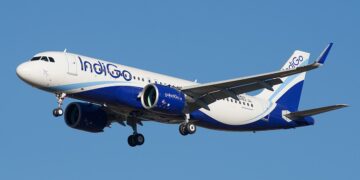
Spiritual tourism in India has been witnessing steady growth over the years. Places like Varanasi, Ayodhya, Rishikesh, Prayagraj, and others contribute to this growth, bringing a huge number of domestic and foreign travelers. In recent times, the growth has been propelled by big religious events like Maha Kumbh which is drawing tourists from across the world, significantly impacting India’s spiritual tourism. Held once every 144 years, Maha Kumbh highlights India’s profound spiritual heritage and strengthens India’s spiritual tourism industry.

According to Atlys, a leading visa platform, there has been a 21.4% rise in inbound travel for spiritual purposes in India. As per the date, nearly 48% of all spiritual travel visa applicants are linked to Maha Kumbh. The event has become a massive economic and cultural phenomenon with significant implications for India’s tourism and hospitality sectors since authorities estimate an attendance of over 400 million pilgrims, including international tourists.
Moreover, an official statement released by the Uttar Pradesh Information Department highlighted more than 57.1 million devotees took a holy dip in the Triveni waters on the occasion of Mauni Amavasya which is also one of the key bathing dates during the Maha Kumbh. The total footfall has now surpassed 199.4 million and is expected to increase more. As Maha Kumbh gains global recognition, it continues to serve as a powerful force driving India’s tourism economy, positioning the country as a premier destination for spiritual seekers worldwide.
Gopal Krishna Agarwal, National Spokesperson of BJP for Economic Affairs, says, “Maha Kumbh serves as a major driver of spiritual tourism, attracting an unparalleled influx of domestic and international visitors. The sheer scale of the event, often exceeding attendees by millions, highlights India’s position as a global hub for religious and cultural tourism. Further, the government’s focus on infrastructure and tourism-friendly policies is creating long-term benefits for the region. Besides, Maha Kumbh’s influence extends beyond Prayagraj, significantly boosting tourism in nearby religious hubs like Varanasi and Ayodhya. With pilgrims often extending their journeys to these sacred cities, heritage tourism in the region is witnessing remarkable growth. Hence, we believe this reinforces India’s vision of reclaiming its status as a global spiritual and cultural destination, where faith and economic prosperity go hand in hand.”
Beyond Maha Kumbh, events like the Maitri Cultural Economy Summit further harness the transformative power of culture for economic prosperity. Just as Maha Kumbh reinforces India’s spiritual and economic vibrancy, such initiatives contribute to India’s resurgence as a global cultural hub, creating deeper engagement between culture, tourism, and economic growth.
In addition, the Maha Kumbh has triggered a sharp rise in demand for hotels, resorts, and homestays in and around Prayagraj, as millions of pilgrims and tourists converge for the event. Hotels, from budget to luxury, experience a surge in bookings, and new hospitality ventures spring up to accommodate the influx. With better infrastructure and increased global visibility, the region is transforming into a year-round spiritual tourism destination.
Ambika Saxena, CEO, TWH Hospitality, says, “The Maha Kumbh has emerged as a key driver of growth in India’s hospitality sector, accelerating the rise of premium spiritual tourism. The increasing demand for high-end accommodations and bespoke spiritual experiences reflects a broader shift in consumer preferences, positioning religious tourism as a significant contributor to the economy. This evolving landscape presents a unique opportunity for both legacy hospitality players and new ventures to tap into a rapidly expanding market. At TWH Hospitality, we see Maha Kumbh as a model for integrating cultural heritage with sustainable economic development, reinforcing India’s position as a global spiritual tourism hub.”
Therefore, Maha Kumbh’s transformative impact on India’s tourism industry cannot be overstated. Beyond its religious significance, the event has become a powerful driver of economic growth, reshaping the tourism landscape by attracting millions of domestic and international visitors.
Follow BOTT on LinkedIn, Facebook, Twitter & Instagram
Subscribe BOTT Channels on WhatsApp & Telegram to receive real time updates



































